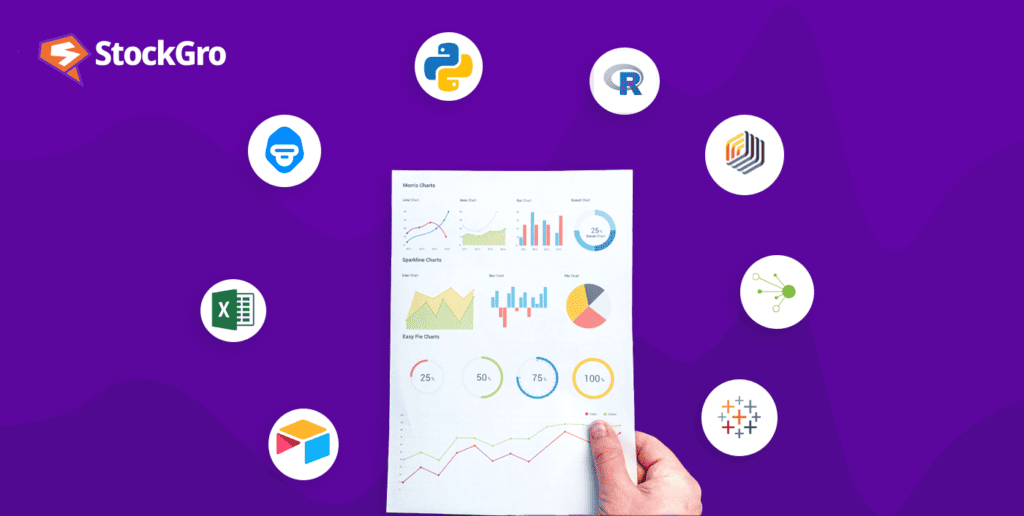
Have you ever wondered how to pick the best stocks for your portfolio using data? Stock market investing can be a profitable strategy to increase your wealth. However, it can also be challenging and risky, as many factors can affect the performance and value of stocks. In this case, quantitative analysis can be your answer—a method that can help you evaluate stocks based on data and figures.
In this article, we will explain the essentials of quantitative analysis, such as its concept, benefits, drawbacks, and metrics. By the end of this article, you will have an idea about quantitative analysis for your stock selection and make better and more rational decisions. Let’s begin!
You may also like: Beat the market: Your ultimate guide for fundamental analysis tools.
What is quantitative analysis?
Quantitative analysis is a method of evaluating stocks based on numerical data and statistics, performed by quants or quantitative analysts. This part of fundamental analysis involves using mathematical models, algorithms, and formulas to measure and compare different aspects of a company’s performance. The main goal of quantitative analysis is to find patterns and trends in the data that can help predict the future performance of a stock.
Quantitative analysis in finance comes under quantitative management theory, which is a broader concept that applies quantitative methods and models to various management and decision-making processes.
What is quantitative data and how is it used for analysis?
Quantitative data involves data that can be measured and expressed in numbers. When investing in publicly traded companies, quantitative data means the financial results and stock price changes of the company in general.
For example, the price, volume, and market capitalization of a stock are quantitative data. This data can be used for analysis by applying various mathematical and statistical techniques that can help summarise, compare, and interpret the data in a meaningful way. With quantitative data, investors can identify the strengths and weaknesses of a stock, as well as its opportunities and threats.
How do qualitative and quantitative analysis differ from each other?
If you are thinking about how to do the analysis of a stock, then there are two main ways: qualitatively and quantitatively. The quality of a company—its business strategy, competitive advantage, brand value, innovation, and so forth—is the main emphasis of qualitative analysis. Instead of relying on statistics and numerical data, qualitative analysis is based on subjective opinions.
Quants, on the other hand, don’t visit businesses, speak with management, or examine the goods that companies sell to find a competitive advantage, in contrast to typical qualitative investment analysts. Quantitative analysis focuses on the quantity of a company, including its financial performance, growth potential, profitability, valuation, risk, and so on. In comparison to qualitative analysis, quantitative analysis is based on objective facts and figures rather than personal preferences.
To put it simply, a “what” analysis is what quantitative analysis focuses on. It tries to clarify both the present state and the future appearance of a company’s financial statements. Similarly, qualitative analysis focuses on the “how” of things. It searches within the company for issues that will impact its future growth. It also clarifies why the quantitative analysis statistics show up the way they do.
Both of the parts of fundamental analysis complement and balance each other and are necessary for stock selection.
Also read: How to Invest in US Stocks from India?
Pros and cons of quantitative trading
Quantitative trading can be done by individual investors, hedge funds, or institutional investors. However, this type of trading may come with both advantages and drawbacks. Let’s look at them one by one.
- Pros of quantitative analysis:
Speed: Using quantitative trading tactics, investors may automate tasks that they would otherwise have to do manually. You can execute trades faster and more accurately, as it can process large amounts of data and signals in real-time
Discipline: The skill of traders is also often significantly hampered by emotion. It may be fear or greed that drives trading decisions. This “emotion-based trading” issue is eliminated by quantitative trading since computers and mathematical models are immune to it.
Diversification: Another benefit of quantitative trading is its ability to exploit opportunities across different markets, instruments, and time frames. It can analyse and trade multiple assets simultaneously, helping traders diversify their portfolios.
- Cons of quantitative analysis:
Complexity: Quantitative trading models must be dynamic to succeed in the highly dynamic environment of financial markets. Ultimately, a lot of quantitative traders create models that are lucrative only in the short run, which leaves them unable to adapt to shifting market conditions.
Data accuracy: Since quantitative analysis largely relies on data, the accuracy of the data in use, is of paramount importance. Inaccurate data can lead to misleading results
Top 4 metrics to evaluate a stock using quantitative analysis
Profit-to-earnings ratio (P/E ratio): A P/E ratio is calculated by dividing the current share price by the earnings per share. A high P/E ratio may indicate that the company has high growth potential or is overvalued, while a low P/E ratio may suggest that the company has low growth prospects or is undervalued.
Peer-to-peer comparison: Firms from the same sector with similar sizes and performance are compared here. It uses various valuation metrics, such as the P/E ratio, earnings before interest, taxes, and price-to-sales ratio (P/S ratio), to assess how a company fares against its competitors. This can help investors identify the strengths and weaknesses of a company and its growth potential.
Gross profit margin: With the gross profit margin metric, traders can measure how much a company retains from its revenue after deducting the cost of goods sold. It is determined by taking the income and dividing it by the cost of the products sold. Moreover, you can also analyse a company’s performance over time and see how cost-effective it is by looking at its gross profit margin.
Revenue growth: Probably the most significant figure in a business’s financial records is revenue. You would need to compare the revenue from the prior period with the revenue from the current period to analyse a company’s revenue growth. A 10% annual growth rate maintained over several years is generally regarded as satisfactory.
Also read: Risk management in stock market
Consider the example of Hindustan Unilever Ltd and ITC in the FMCG Industry. Below are some of the quantitative metrics used for comparing the two:
| Metric | HUL | ITC |
| Net profit margin (As of Mar 2023) | 16.84% | 28.39% |
| Basic EPS (As of Mar 2023) | 42.40 | 15.15 |
| P/E Ratio | 57.32 | 26.83 |
Conclusion
Quantitative analysis is an influential tool that aids in stock selection. However, it is not a magic formula, but a skill that you can learn and improve over time. To get the best out of your investments, make sure to consider other factors as well, like qualitative analysis, market trends, and personal goals, when evaluating stocks.

